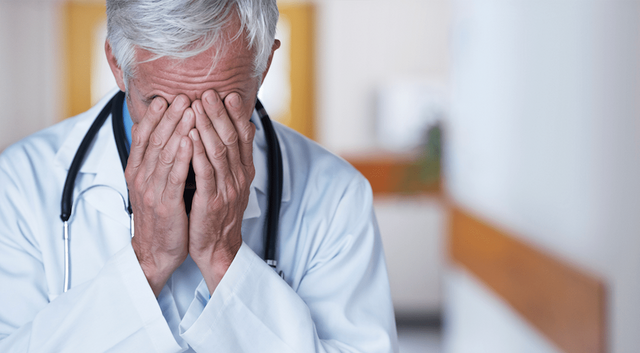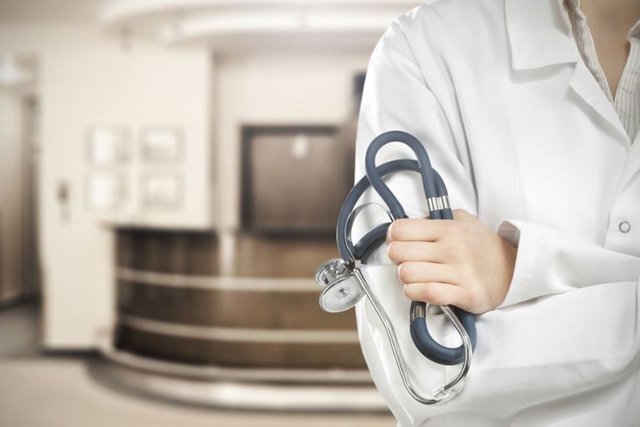Why Do Doctors Commit Suicide?

Most physician suicides are multifactorial involving a cascade of events. Let’s not wait until the last few minutes of a doctor’s life when heroic interventions are required. Doctors are least likely to reach out for help, so let’s reach out to the doctors instead
Dr Raj Khillan
The public perception is that we doctors are successful, confident, intelligent, wealthy, and immune from the problems of the masses. To patients, it is inconceivable that doctors would have the highest suicide rate of any profession
Last year, the suicides of three young doctors in New South Wales had shaken Australia. It forced authorities to think about the mental and physical health of medical professionals.
In the US, the medical profession has highest suicide rate than any profession; one doctor commits suicide every day—28 to 40 per 100,000—twice the rate of the general population.
Because of their professional knowledge and easy access to lethal means, doctors have a far higher suicide completion rate than the general public. The most reliable estimates of successful completion of suicide range from 1.4-2.3 times the rate achieved in the general population. Although female doctors attempt suicide less often than their counterparts in the general population, their completion rate equals that of male doctors and, thus, far exceeds that of the general population (2.5-4 times the rate by some estimates).
The most common psychiatric diagnoses among doctors who complete suicide is depression. The most common means of suicide by physicians are lethal medication overdoses and firearms, in the western world.
Like everyone else, doctors do have usual problems of life. We get divorced; have custody battles, court issues, disabled children, and family problems, illness and deaths of friends and relatives. Overload of working 60 to 80 or more hours per week treating patients’ means we often have no time to deal with our own problems.
I’m always surprised by how often non-medical people tell me they are shocked that doctors have the same mental-health issues and personal problems that everyone else has.
Some people in the medical profession believe the public doesn't need to know that doctor suicide is a real problem, as if a healer being in pain is shameful and would frighten patients.
Doctors are masters of disguise. Many doctors who kill themselves appear to be the most optimistic, upbeat, and confident people. Just back from holidays, or got award for his best surgical achievements and hours later they shoot themselves in the head. These are the people who are spending day and night to make others life happy by masking their own despair and failure to cope.
Suicide is an occupational hazard in medicine. Doctors develop on-the-job PTSD—especially in emergency medicine and in doctors working in intensive care. Patient deaths—even with no medical error—may lead to self-loathing. Suicide is the ultimate self-punishment. Humans make mistakes. When doctors make mistakes, they are publicly shamed in court, on television, and in newspapers. As doctors, we suffer the agony of harming someone else—unintentionally—for the rest of our lives.
If doctors do seek help, they risk being disciplined. Doctors rightfully fear lack of confidentiality when receiving mental health care as private conversations with therapists could be turned over to medical boards and illegally accessed by their supervisors via electronic medical records at their institutions.
With a great work ethic until their last breath, doctors are often checking in on patients, reviewing test results, and dictating charts minutes before orchestrating their own suicides. Many leave apologetic heartfelt letters detailing the reasons for their suicide for friends, family, and staff. One orthopaedic surgeon simply wrote: “I’m sorry I couldn’t fix everyone.”
Doctors choose suicide to end their pain (not because they want to die). Suicide is preventable if we stop the secrecy, stigma, and punishment. In absence of support, doctors make impulsive decisions to end their pain permanently.
The 2013 Beyondblue survey found doctors had substantially higher rates of psychological distress and attempted suicide than Australians in general. A quarter of doctors had had suicidal thoughts—almost double the rate of the general population—and 21 per cent had ever been diagnosed with or treated for depression. Burnout was a serious problem for young doctors, with almost half reporting emotional exhaustion.

Female health professional are at twice the risk of suicide than women in any other profession, a study published in 2017 which examined 369 suicides among a range of health professionals, revealed. Though men are generally three times more likely than women to die by suicide, female health professionals take their own lives at roughly the same rate as their male peers.
Sadly, although doctors globally have a lower mortality risk from cancer and heart disease relative to the general population (presumably related to knowledge of self-care and access to early diagnosis), they have a significantly higher risk of dying from suicide, the end stage of an eminently treatable disease process. Perhaps even more alarming is that, after accidents, suicide is the most common cause of death among medical students.
In every population, suicide is almost invariably the result of untreated or inadequately treated depression or other mental illness that may or may not include substance or alcohol abuse, coupled with knowledge of and access to lethal means.
Depression is at least as common in the medical profession as in the general population, affecting an estimated 12% of males and up to 19.5% of females. Depression is even more common in medical students and residents, with 15-30% of them screening positive for depressive symptoms.
Studies from USA, Finland, Norway, Australia, Singapore, China, Taiwan, Sri Lanka, and others have shown increased prevalence of anxiety, depression, and suicidality among students and practitioners of medicine.
Doctors follow their own of colleagues advice about avoiding smoking and other common risk factors for early mortality, but they are decidedly reluctant to address depression, a significant cause of morbidity and mortality that disproportionately affects them.
The book Why Physicians Die by Suicide, by US psychiatrist Dr Michael Myers throws lights on the different ways in which stigma kills doctors.
Dr Myers writes "Because doctors lives have been so defined by achievement, doctors may feel even more uncomfortable than most with the notion of being perceived as a failure or, even worse, as a burden: "It's easier for us to look after people, to be the helper, than the one being helped."
Many clinicians are uncomfortable treating fellow physicians, especially in the realm of mental health. The “VIP syndrome,” characterised by well-intentioned, but superficial or inadequate, treatment based on collegiality and concerns about confidentiality, can detract from the effectiveness of therapy.
Mental health experts who have studied doctors’ depression and suicide stress that immediate treatment and confidential hospitalisation of suicidal physicians can be lifesaving—more so than in other populations. Yet, the spectres raised by this approach—the fear of temporary withdrawal from practice, of lack of confidentiality and privacy in treatment, or of loss of respect in the community—are often major impediments that hinder physicians from reaching out in a time of crisis and seeking effective treatment.
Physicians who have reported depressive symptoms to their licensing boards, potential employers, hospitals, and other credentialing agencies have experienced a range of negative consequences, including loss of their medical privacy and autonomy, repetitive and intrusive examinations, licensure restrictions, discriminatory employment decisions, practice restrictions, hospital privilege limitations, and increased supervision.
Medical licensure applications and renewal applications frequently require answers to broad-based, time-unlimited questions regarding the physician’s mental health history without regard to current impairment,
Discrimination in obtaining insurance coverage is a common, but little publicised problem for physicians with mental illness. Health, disability, life, and liability insurance may all be denied to a physician who admits to depression
Doctors indulge into self–treatment especially when they believe that the consequences of seeking treatment may subject them to stigma, shame, or worse. Too often, however, attempts at self-treatment are unsuccessful. Failure to obtain consultation and treatment for depression needlessly and significantly increases the risk of physician suicide.
The recent National Forum on Reducing Risk of Suicide in the Medical Profession—jointly convened by the AMA and Doctors’ Health Services Pty Ltd (DrHS) examined the individual, organisational, and environmental issues that impact negatively on the emotional health and wellbeing of doctors.
“Do No Harm” is an eye-opening documentary on the little-known epidemic of doctors’ suicide by two time Emmy-award winning filmmaker Robyn Symon. Through the tales of suicide survivors, family members who lost their loved ones, and medical staff from all fields who are merely surviving. I believe “Do No Harm” should be aired in all the medical schools and hospitals so that we may prevent more suicides. And it should be aired in all theatres so that the public may witness what their doctors go through daily.
In the meantime, medical institutions need to openly acknowledge the problem and make changes to support the mental health of doctors and medical students. Healers, after all, also need healing.
The writer is a paediatrician & Director, Western Specialist Centre; www.westernspecialistcentre.com.au; Courtesy and thanks to Medscape, Do No Harm, Pamela Wible for their contribution and pioneering work on Suicide in physician.
Posted from my blog with SteemPress : https://www.theindiansun.com.au/2018/10/17/doctors-commit-suicide/